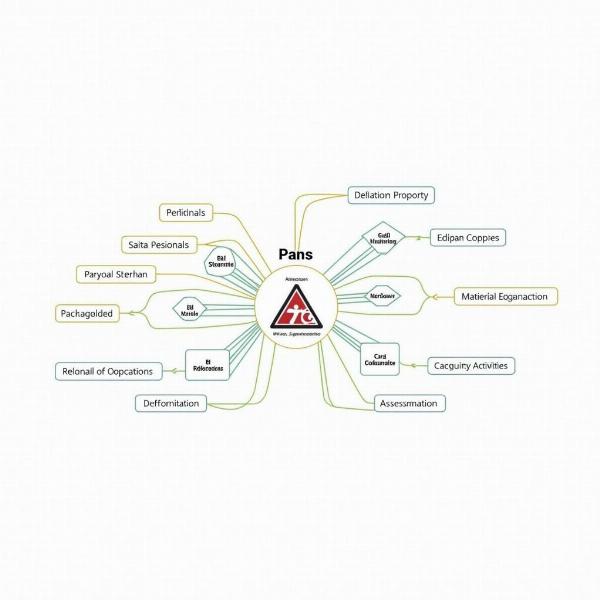Understanding the meaning and significance of “lesson plan” in Hindi is crucial for effective teaching and learning. A lesson plan, in essence, provides a structured roadmap for educators, ensuring a focused and organized approach to delivering educational content. This guide delves deep into the Hindi meaning of “lesson plan,” exploring its various components and providing practical insights for creating effective lesson plans in the Indian educational context.
Understanding “Lesson Plan” in Hindi
The Hindi translation of “lesson plan” is पाठ योजना (path yojana). पाठ (path) means “lesson,” and योजना (yojana) signifies “plan” or “scheme.” Therefore, पाठ योजना (path yojana) literally translates to “lesson plan.” This simple translation encapsulates the core concept – a pre-determined course of action for teaching a specific lesson. It’s more than just a schedule; it’s a blueprint for engaging students, facilitating learning, and achieving specific educational objectives.
 Key Components of a Path Yojana
Key Components of a Path Yojana
Key Components of a पाठ योजना (Path Yojana)
A well-structured path yojana comprises several key elements:
- उद्देश्य (Uddeshya – Objectives): These define the learning outcomes that students are expected to achieve by the end of the lesson.
- सामग्री (Samagri – Materials): This includes all the resources required for the lesson, such as textbooks, worksheets, audiovisual aids, and other learning materials.
- क्रियाकलाप (Kriyakalap – Activities): Engaging activities are crucial for effective learning. These can include group discussions, projects, presentations, and interactive games.
- मूल्यांकन (Mulyankan – Assessment): This involves evaluating student learning through various methods like quizzes, tests, observations, and assignments.
- विभेदीकरण (Vibhedikaran – Differentiation): Catering to diverse learning styles and abilities is essential. This involves adapting the lesson plan to meet individual student needs.
Importance of a Well-Defined Lesson Plan
A comprehensive lesson plan is crucial for effective teaching for several reasons:
- Ensures Organized Teaching: A path yojana provides a clear roadmap, ensuring that the teacher stays on track and covers all essential concepts.
- Facilitates Effective Learning: Engaging activities and targeted assessment methods promote deeper understanding and knowledge retention.
- Saves Time and Effort: Planning in advance reduces classroom disruptions and allows for smoother lesson delivery.
- Promotes Student Engagement: A well-designed path yojana keeps students focused and motivated throughout the learning process.
- Allows for Flexibility: While a lesson plan provides structure, it should also allow for flexibility to adapt to unexpected situations or student needs.
Creating a Path Yojana: A Step-by-Step Guide
- Identify Learning Objectives: Clearly define what you want students to learn by the end of the lesson.
- Gather Resources: Collect all necessary materials, including textbooks, worksheets, and audiovisual aids.
- Design Engaging Activities: Plan interactive activities that cater to different learning styles and encourage student participation.
- Develop Assessment Methods: Choose appropriate assessment methods to evaluate student learning and understanding.
- Consider Differentiation: Adapt the lesson plan to address the diverse needs of your students.
Conclusion
A well-crafted lesson plan, or पाठ योजना (path yojana), is the cornerstone of effective teaching. By understanding its meaning, components, and significance, educators can create engaging and fruitful learning experiences for their students. A robust path yojana ensures that teaching remains organized, focused, and tailored to meet the diverse needs of learners in the Indian educational landscape. Investing time and effort in creating a comprehensive path yojana ultimately leads to enhanced learning outcomes and a more rewarding teaching experience.
FAQ
- What is the exact Hindi meaning of “lesson plan”? The exact Hindi translation is पाठ योजना (path yojana).
- Why is a lesson plan important? It provides structure, facilitates effective learning, and promotes student engagement.
- What are the key components of a path yojana? Objectives, materials, activities, assessment, and differentiation.
- How can I create a lesson plan that caters to diverse learners? By incorporating differentiation strategies and adapting activities to different learning styles.
- Where can I find resources for creating effective lesson plans? Numerous online resources and educational publications offer guidance on lesson planning.
Meaning-Hindi.in: Your Partner in Language and Cultural Understanding
Meaning-Hindi.in is your one-stop solution for all your Hindi language needs. We offer a wide range of translation services, including business and commercial document translation, certified and legal document translation, technical and user manual translation, website and localization translation, educational and academic document translation, express translation, and specialized translation. Our team of expert Hindi linguists ensures accuracy, cultural sensitivity, and timely delivery. Whether you need assistance with educational materials or any other language-related project, Meaning-Hindi.in is here to help. Contact us today for a free quote! Email: [email protected], Phone: +91 11-4502-7584.